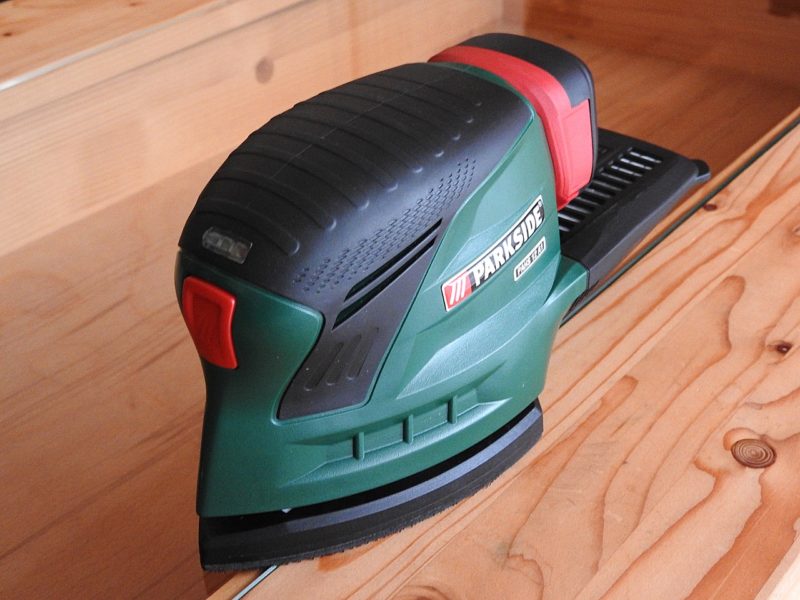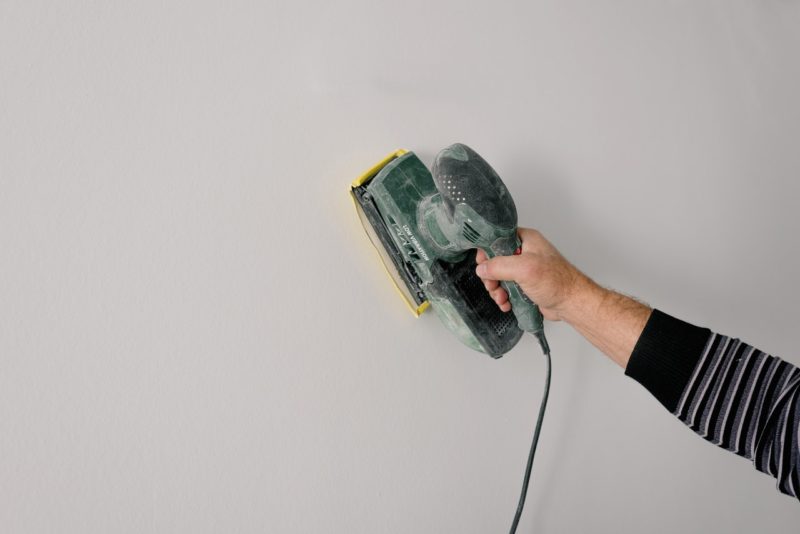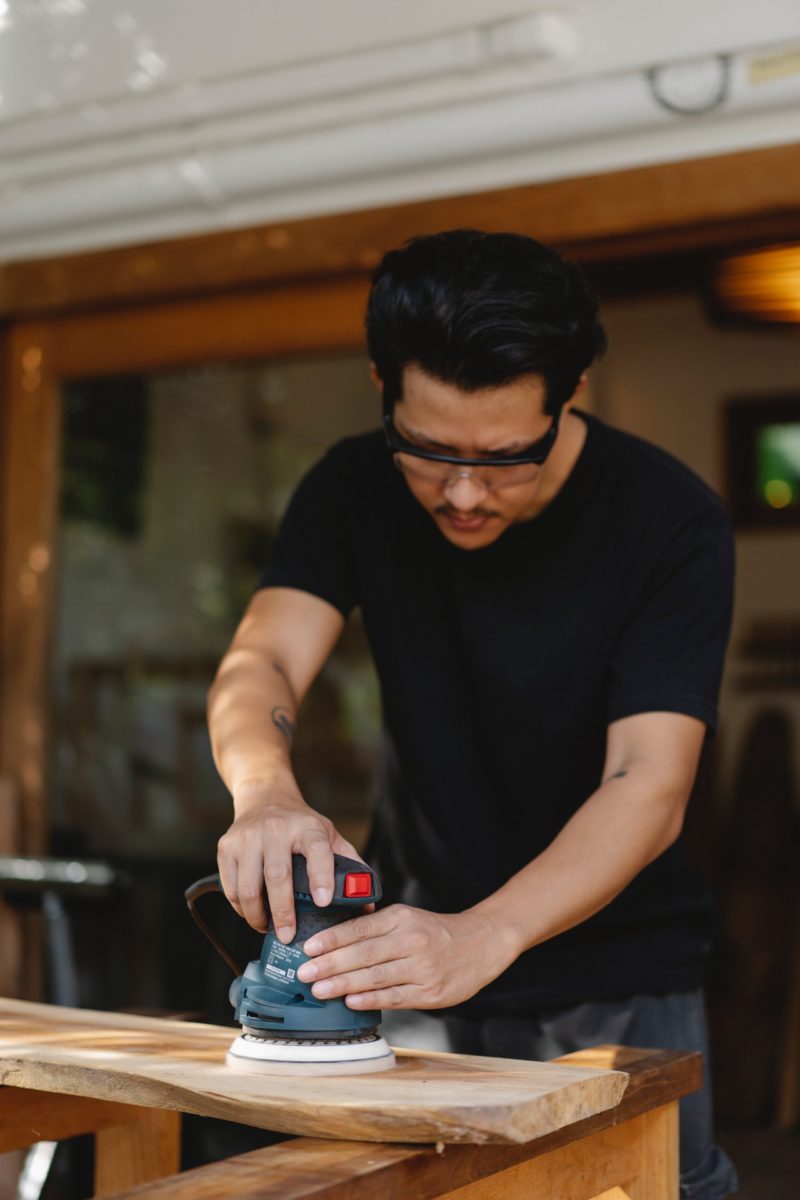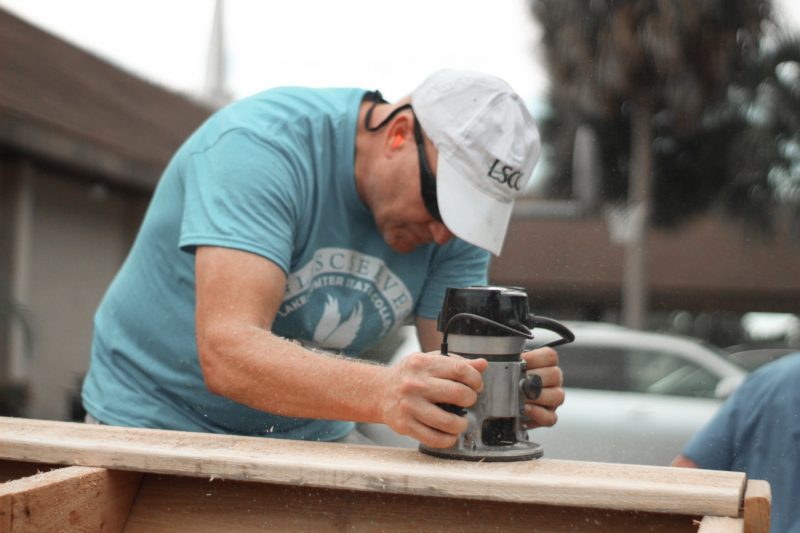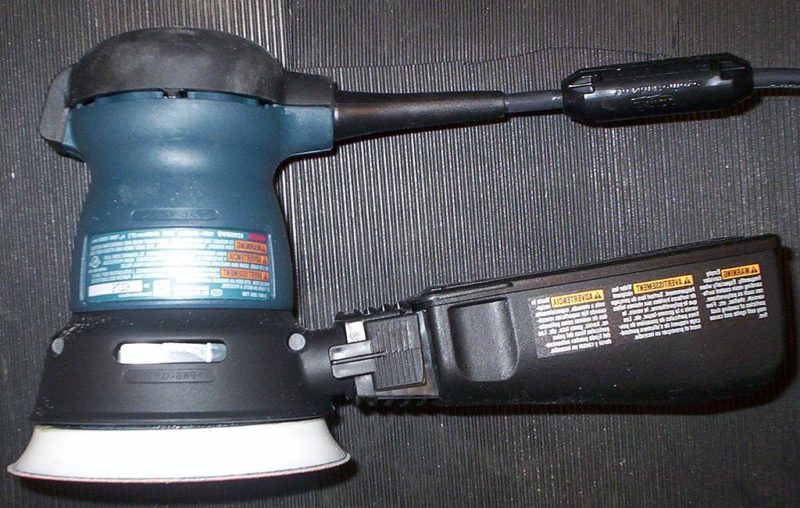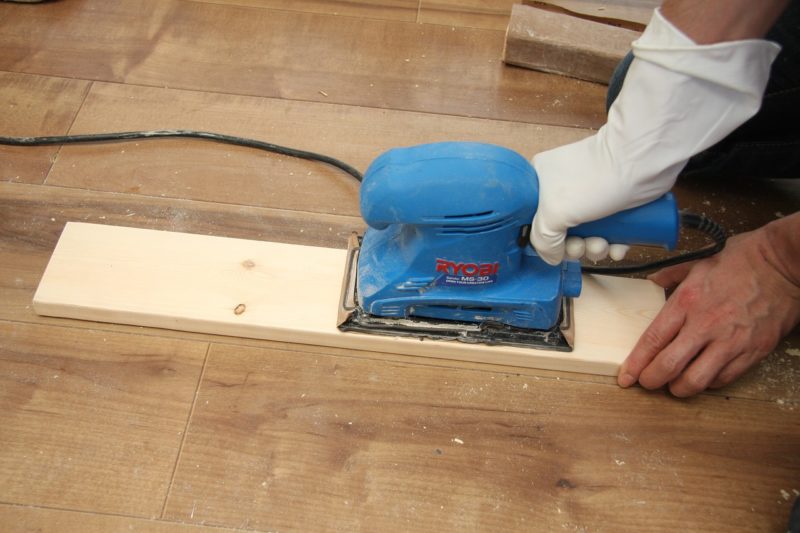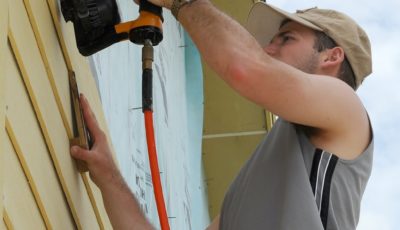5 Different Orbital Sanders for DIY Projects
The random orbital sander is a hand-held power tool that automates the sanding process using a power source – typically electric and sometimes air – to provide the user with efficient sanding capabilities. The increase in efficiency not only allows you to sand larger areas but it also improves the quality of finish that you can achieve.
The “random orbit” functionality relates to the way in which the sandpaper is applied to the surface of the material that you are sanding. As the name suggests, a random orbital sander has a variable angle at which the head of the sander rotates. This results in the head of the sander contacting the surface randomly and with varying amounts of pressure. Ultimately this avoids creating marks and abrasions on the surface and results in a very smooth and even finish.
For this reason, random orbital sanders are very popular with DIY enthusiasts for a range of home improvement tasks from sanding a drywall prior to painting, to refurbishing an antique chair and even re-sanding a hardwood floor.
There are lots of different types of orbital sander, each one suitable for specific tasks, and in this article, we will take a closer look at 5 types along with their ideal uses.
1 – The Palm Sander
The palm sander is one of the smallest types of orbital sander and as its name suggests, can basically fit into the palm of your hand. That is not to say that you could carry it around like that, but what it means is you can sand a small area using the palm sander and you only need one hand to do so.
These features make the palm sander ideal for sanding small items of furtive such as a bedside table or a wooden handle. Because you can use the palm sander with one hand it frees up your other hand for holding the item that you are sanding. In addition, the palm sander is very easy to manoeuvre due to its size, so when you are sanding a small item, you can work fairly quickly and efficiently.
2 – The handheld sander
The handheld sander is very similar to the palm sander except that it is slightly larger in size and requires two hands for effective operation.
The handheld sander typically has two handles or at least a primary holding area and then an additional handle for added control. With a handheld sander you will have more power at your fingertips – in fact they often have variable speed controls so that you can increase the power when required. However, with the additional power comes added weight and size; this means that the handheld sander is ideally suited for sanding slightly larger items such as the surface of a large table or a cabinet. You can cover a much larger area with this type of sander, and it is generally more robust than a palm sander. It is slightly harder to operate and requires a little more strength and stamina from the user.
3 – The orbital sheet sander
It is a common misconception that orbital sanders always have circular heads on them. In reality, the orbital sander is often rectangular in shape and it is just the motion of movement that is orbital in its nature.
The orbital sheet sander is a case in point; this is still an orbital sander but the head – where the sandpaper is attached – is rectangular in shape. This rectangular shape has its own benefits as well as drawbacks. The main advantages are that you have a larger surface area with which to sand and in addition you have a perfectly straight edge. This straight edge is really useful if you are sanding a table or other large flat surface and you want to be able to sand along an edge without the sander veering off course.
The disadvantage of this type of sander is that you cannot easily sand uneven objects such as table legs where there are lots of curves – because the flat and square-shaped sanding head does not move well over such uneven surfaces.
4 – The battery powered orbital sander
Although electric-powered orbital sanders tend to be mains based, there are some sanders that operate on battery power. These are less common and tend to be a little less powerful, however they are definitely a good option if you need to sand something on-location and there are perhaps limited power outlets available to you.
They are also handy if you need to freely move around with the sander; for example, if you are sanding a large table and you need to move underneath the table, around the table lets and so on. With a battery powered orbital sander you can do this without any risk of getting yourself caught up in the power cable and also without the need to have a power-socket nearby.
5 – The orbital air sander
Although these sanders are less common with DIY enthusiasts and the typical home project, they are very cool and something that had to include in this article.
The reason that air sanders are less common is due to the increased complexity in their operation. The primary point being that you have to have an air compressor unit in order to make the air sander operational. This air compressor is what provides the “power” to the sander, rather than a typical electric-powered variant.
The big advantage of the air sander, and the main reason why people use them over an electric powered sander, is the fact that they do not involve electric – not directly at least. As you can imagine, these orbital sanders are ideal for projects where water is required – for example when polishing a car. If you have to involve water, then you definitely don’t want to be using an electrical power tool – for obvious reasons – and compressed air is the best alternative.
Choosing the right sander for your DIY project
Now that you have an idea of the different types of orbital sanders that are available, along with the ideal use-case for each type, it should be easier for you to pick the right sander specifically for the DIY project that you have in mind.
It might sound like a complication having to purchase a specific orbital sander – especially if you already have one sitting in your shed unused – however, it is always better to get the right tools for the job and sanders are no exception. If you pick the sander that is best suited to your project then you will find that things go smoothly, your required effort will be reduced and the end-result is likely to be much higher in quality than it would be if you just “made do” with the wrong type of sander for the job.

